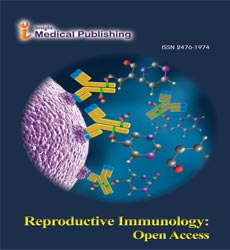Abstract
Impact of Timing on Insemination In Relation to Ovulation on the Cycle Pregnancy Rate of Intrauterine Insemination and Intrauterine Tuboperitoneal Insemination in Unexplained Infertility
Objective: 1) To compare the cycle pregnancy rate of intrauterine insemination (IUI) to that of intrauterine tuboperitoneal insemination (IUTPI) in unexplained infertility 2) To assess the effect of timing of insemination in relation to ovulation on the cycle pregnancy rate of IUI and IUTPI Design: Prospective randomized study. Main outcome measures: 1) Cycle pregnancy rate of IUI and IUTPI 2) Cycle pregnancy rate of preovulatory and postovulatory insemination Material and Methods: Two groups (A and B), each group included 160 women with unexplained primary infertility. Group A were treated by IUI and group B by IUTPI after mild controlled ovarian stimulation (mCOS) with clomiphene citrate/ human menopausal gonadotropin/human chorionic gonadotropin. At the time of insemination the occurrence of ovulation was checked by transvaginal sonography. Results: After the three treatment cycles 40 patents of group A (25%) and 60 patients of group B (37.50%) had ongoing pregnancies (p=0.033) and the overall cycle pregnancy rate of group A was 9.21% and group B 14.81% (p=0.0324). In group A the cycle pregnancy rate of preovulatory insemination was 7.20% and postovulatory 9.76% (p=0.041). In group B the cycle pregnancy rate of preovulatory insemination was 17.70% and postovulatory 13.0% (p=0.0322). Five out of 40 pregnancies (12.5%) in group A, and 4 out of 60 pregnancies (6.60%) in group B were twins (p=0.0431). Conclusion: In unexplained primary infertility IUPI had significantly higher cycle pregnancy rate than IUI. Cycle pregnancy rate of IUI was significantly higher with postovulatory than preovulatory insemination. Cycle pregnancy rate of IUTPI was significantly higher with preovulatory than postovulatory insemination.
Author(s):
Dina Gamal Eldeen Y Elkholi, Halah Mohamed Nagy
Abstract | Full-Text | PDF
Share this

Google scholar citation report
Citations : 237
Reproductive Immunology: Open Access received 237 citations as per google scholar report
Abstracted/Indexed in
- Google Scholar
- Sherpa Romeo
- China National Knowledge Infrastructure (CNKI)
- Secret Search Engine Labs
Open Access Journals
- Aquaculture & Veterinary Science
- Chemistry & Chemical Sciences
- Clinical Sciences
- Engineering
- General Science
- Genetics & Molecular Biology
- Health Care & Nursing
- Immunology & Microbiology
- Materials Science
- Mathematics & Physics
- Medical Sciences
- Neurology & Psychiatry
- Oncology & Cancer Science
- Pharmaceutical Sciences

